
views
- Prevent flies from entering your compost toilet by replacing the vent screen with a finer No-See-Um mesh.
- Eliminate eggs and larvae by disinfecting your toilet. Empty and rinse the toilet, then scrub it with diluted bleach. Douse non-electrical parts in boiling water.
- Kill flies by turning off the fan and adding 5 cups (628 g) of diatomaceous earth to the toilet. Sprinkle more after each use until the infestation clears.
- Capture adult flies by hanging sticky fly paper in your bathroom.
Add extra bulking material.
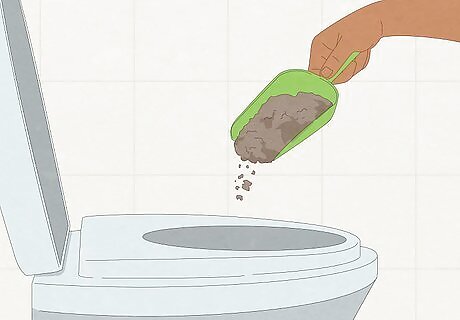
Use more additive to dry out the compost. Toss in extra bulking agent to absorb moisture and make your bathroom less appealing to flies. The solids in your tank should look like damp crumbly earth, not a smelly swamp. There isn’t a one-size-fits all recommendation for exactly how much to add. There are various factors, like how many people use your toilet, using different bulking material (sawdust, peat, or coconut coir), and the type of unit you own.
Spread diatomaceous earth in the tank.
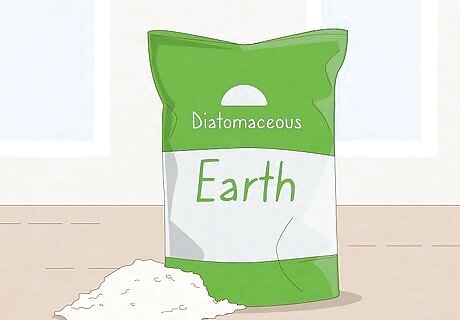
Turn off the fan and add diatomaceous earth to slice the insects. Sprinkle 5 cups (.63 kg) of natural-grade diatomaceous earth to the tank. Add a fresh layer every time the toilet is used until the infestation clears. Leave the fan off after application so the flies will land on it and meet their doom. Diatomaceous earth is made from fossilized diatoms. Although it looks like a soft powder, the material is very sharp for tiny insects! Only use diatomaceous earth that is labeled “food-grade” or “natural-grade,” not the kind used to filter swimming pools. The pool-grade powder contains more silica, making it more dangerous to use. Wear protective gear, including gloves, safety glasses, and a dust mask when spreading diatomaceous earth. The dust can irritate your lungs if it’s inhaled.
Spray a neem oil solution inside the toilet.
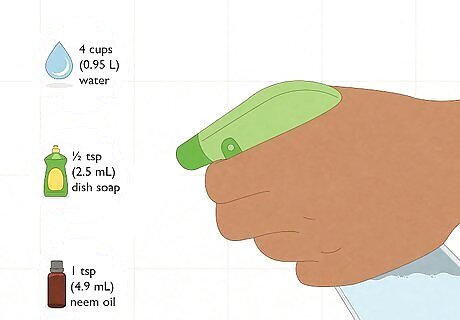
Kill fly larvae and eggs by spritzing a neem oil solution. Spray it in the toilet and reapply for a few days. You can buy the solution ready-mixed, or you can make it yourself. To make your own neem oil solution, mix 4 cups (0.95 L) of water with ½ tsp (2.5 mL) liquid dish soap and 1 tsp (4.9 mL) of neem oil in a spray bottle. Neem oil is a natural, botanical insecticide that kills insects by suffocation.
Sprinkle BinBreeze in the toilet.
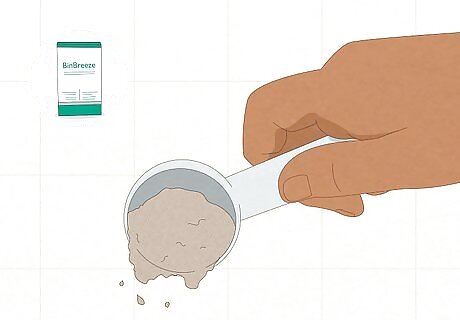
Add BinBreeze to kill adult flies and break the breeding cycle. Sprinkle 1 tablespoon (7.85 g) each time the toilet is used. BinBreeze is an organic, fossilized algae powder that works by absorbing the waxy coating of the flies’ exoskeletons; they’re unable to fly and eventually dehydrate.
Spray pyrethrin insecticide.

Spritz pyrethrin directly on the flies to paralyze them. Choose a pyrethrin-based insecticide that specifies it’s suitable for garden use. Dilute it with water as instructed on the label, then use a spray bottle to douse the flies inside your toilet. Multiple applications are necessary since you have to wait for the flies to land so you can spray them. Check the label; some insecticides add other pesticides which could be harmful to your compost. Pyrethrin is made from compounds extracted from finely powdered daisies.
Make a funnel trap.
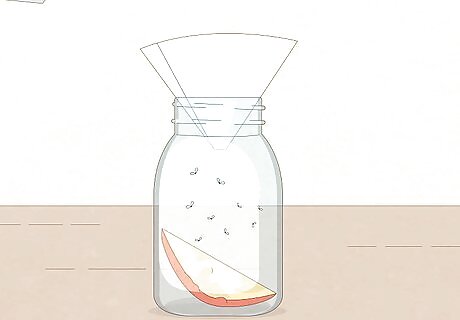
Entice fruit flies to enter a jar baited with fruit. Create a funnel trap by rolling a piece of paper into a cone with a narrow opening at bottom. Tape the side of the cone so it holds its shape. Place a slice of overripe fruit inside a jar, then insert the funnel. Keep the jar in the bathroom. The flies will enter but won’t be able to find their way out. Empty the jar outside and replace the fruit bait after a few days.
Hang a sticky fly trap.
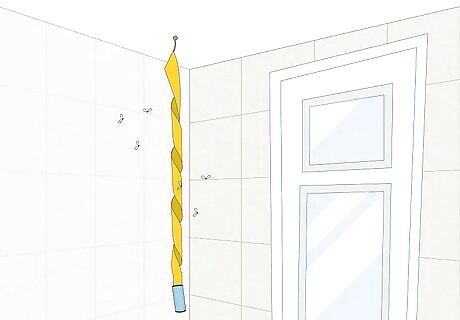
Control the infestation by hanging a sticky fly paper strip. Place it close to the toilet but not in a spot where someone might accidentally bump into it. Fly paper won’t kill the eggs or larvae, but it will trap the adult flies so they can’t breed. It’s a slower method of fixing the fly problem, but sticky fly traps are an inexpensive solution.
Attract flies with apple cider vinegar.
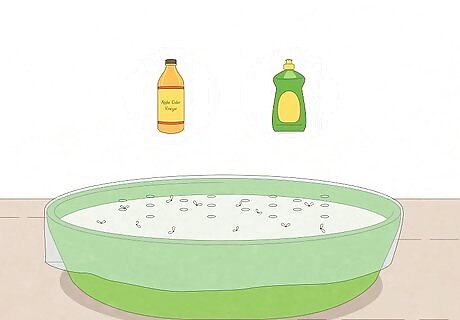
Drown fruit flies in a bowl of apple cider vinegar. Lure in flies by filling a bowl ⅔ full with apple cider vinegar plus a drop of liquid dish soap. Cover the bowl with plastic wrap and poke 10-15 holes in the wrap with a toothpick. Place it in the bathroom to attract and trap the flies. Empty the bowl every few days for a week or two, or until the infestation clears. Stick with apple cider vinegar; flies aren’t fans of white distilled vinegar.
Clean the toilet thoroughly.

Empty the compost toilet and disinfect it to kill eggs and larvae. Put on gloves and a mask and completely empty the tanks. Rinse the unit, then scrub it using a stiff brush and a bleach solution. Finally, douse the non-electrical parts in boiling water. To make a bleach solution, mix 1 ¼ tablespoons of bleach (18.48 mL) with 1 US-quart (950 mL) of water in a spray bottle. Keep the fan unit dry; carefully remove it before cleaning if possible. Otherwise, be very careful not to get the electrical components wet. Use a brush with stiff nylon bristles and a flexible wire handle to scrub your unit. It’s essential that you remove all of the eggs, and this type of brush allows you to get into all of the nooks and crannies.
Make sure the toilet’s ventilation fan is working.
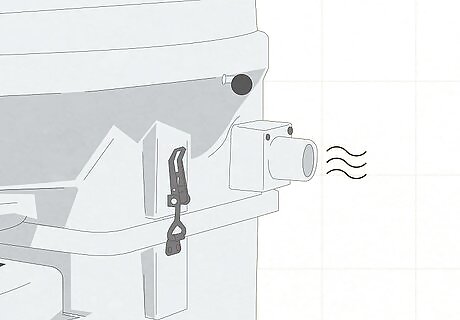
Put your hand over the exhaust vent to check for air flow. If you can’t feel any air, replace or service the unit. Keep the fan running even when the compost toilet isn’t being used. The air directs flies away from the toilet and makes it difficult for them to land and lay their eggs. The ventilation system also reduces humidity and moisture–flies love moist environments, so the fan is a useful deterrent.
Replace the screening with No-See-Um mesh.
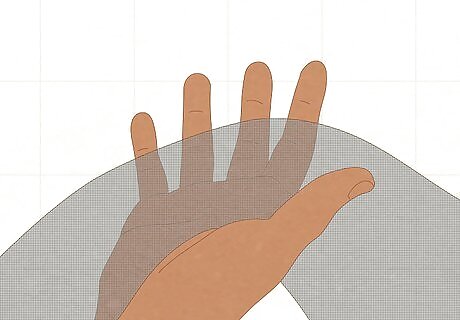
Upgrade the vent screen with a finer mesh to keep insects out. Replace the original screen material with No-See-Um mesh so files can’t find their way in. These flies are very tiny and can easily pass through the standard air inlet screens on some compost toilet units.
Caulk any cracks to keep insects out.

Look for signs of wear and seal cracks with silicone caulk. Are there damaged parts that would allow flies to sneak in? Do you spot any gaps that aren’t tightly sealed? Apply a waterproof silicone sealant caulk to the cracks to stop flies from finding their way in.
Remove the flies’ food source.

Store fruit in the fridge and don’t dispose of food scraps in the toilet. Although some people like to use food waste as an additive in their compost toilets, it’s an invitation for infestations! Vinegar flies are attracted to fruit, and they typically originate in your kitchen before finding their way to your bathroom.
Avoid using mothballs, which are toxic.
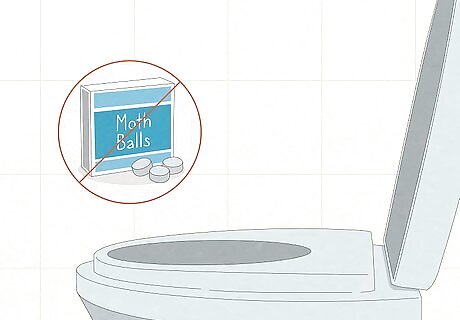
Placing mothballs in the toilet is dangerous. Yes, mothballs have been shown to reduce gnat populations. However, they have one big drawback: unlike the other options on this list, mothballs contain toxic chemicals. As a registered pesticide, it’s illegal to use them in locations not listed on the label. Gasses from mothballs cause health problems like nausea, headaches, and respiratory issues.




















Comments
0 comment